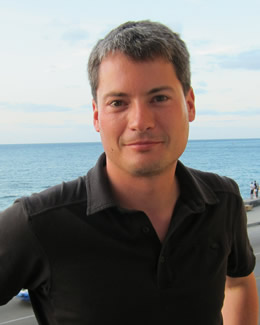Research Catalyst Grantee

Frank J. Black
Westminster College
Project Title
Wildfire ash and Great Salt Lake dust as sources of heavy metals to Utah’s aquatic ecosystems
Abstract
Climate models for Utah vary, but largely predict that future climate change in the region will result in an increase in the frequency and severity of wildfires. Ash from these forest fires and rangeland fires common in the region will, therefore, represent an increasingly important, but poorly studied, source of heavy metals to downwind environments, including Utah’s lakes, rivers and streams. Previous research has shown that wildfires can remobilize lead, mercury, cadmium, and other heavy metals previously sequestered in surface soils. Most regional climate models also predict an increase in the frequency and duration of droughts for the Mountain West. Utah is currently in a five year drought that has resulted in a 7 foot decrease in the elevation of the Great Salt Lake and a 30% decrease in the lake’s volume. Future droughts or the effects of proposed water withdrawals from the Bear River for human water consumption could result in even greater declines. The shallow bathometry of the GSL results in the exposure of a large surface area of lake bed for even a small decrease in lake elevation. GSL lake sediments are elevated in mercury, selenium, arsenic, lead, copper, chromium, and other toxic trace elements, and newly exposed lake sediment is highly amenable to dust generation. As a result, the generation of dust from recently exposed GSL lake bed could result in substantial atmospheric deposition of heavy metals to downwind aquatic ecosystems that are important sources of human drinking water and wildlife habitat.
We will conduct studies to assess the impact of wildfires and the exposure of newly dried GSL lake sediment on the mobilization of heavy metals and the role of each of these in the atmospheric deposition of bioavailable metals to downwind aquatic ecosystems. This interdisciplinary project will combine field studies with lab experiments to characterize not only the magnitude of each of these two as a source of atmospherically deposited metals, but also differences in the lability and bioavailability of the metals associated with each. This research will use ash and dust samples already collected in 2016, with additional sample collection focusing on emission sites near fires and the GSL lake bed, as well as deposition sites in the three iUTAH focus watersheds (Red Butte Creek, Logan River, and Provo River). This approach will allow us to utilize ancillary data generated by the GAMUT sites and other iUTAH researchers, while also generating results that will complement existing iUTAH projects. This project represents collaboration between researchers from three different fields (chemistry, geology/hydrology, and public land management) and three different institutions (primarily undergrad, research university, and government agency).
Collaborators
Greg Carling, Brigham Young University
Evan Glenn, US Forest Service, Uinta-Wasatch-Cache National Forest


